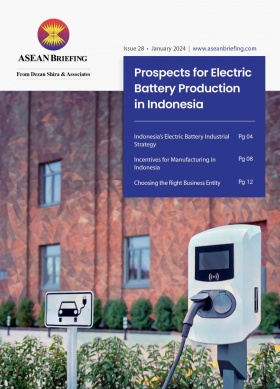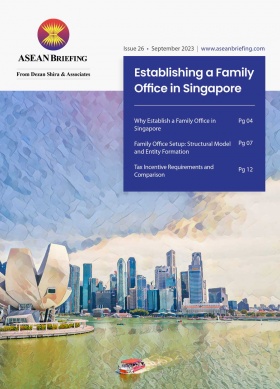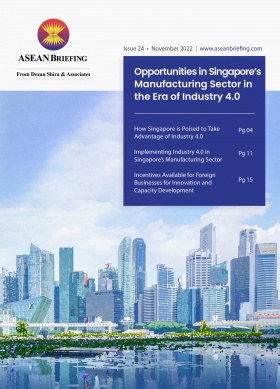Applying ESG Metrics for Sustainability Reports in Singapore
Businesses should note that the SGX recommends a set of 27 core ESG metrics for sustainability reporting, which are subject to periodic review and revision to stay aligned with evolving international reporting standards.
Environmental, social, and governance metrics quantify a company’s commitments to ESG. They help measure the impact of ESG initiatives more scientifically and provide insight into how a company compares to others. While there are no universal ESG metrics, organizations such as the World Economic Forum are working towards developing a universal standard. The Singapore Exchange (SGX) recommends a set of 27 core ESG metrics for issuers to begin their sustainability reporting, aiming for standardized ESG information. These metrics are subject to periodic review and revision to stay aligned with evolving international reporting standards.
ESG frameworks
There are multiple ESG frameworks that businesses can adhere to. Some of the major frameworks are:
- Future-Fit Business Benchmark;
- World Economic Forum;
- The Task Force on Climate-related Financial Disclosures;
- Global Reporting Initiative (GRI);
- Carbon Disclosure Project (CDP);
- Sustainability Accounting Standards Board (SASB);
- Climate Disclosure Standards Board (CDSB);
- International Integrated Reporting Council (IIRC);
- International Sustainability Standards Board (ISSB); and
- EU Corporate Sustainability Reporting Directive (EU CSRD).
What framework a business chooses will determine the ESG metrics that it needs to consider. Further, the nature of the metrics will be different as some can be quantified in percentages and numbers while others are simple yes/no options.
The World Economic Forum has published a set of 21 core and 34 expanded metrics and disclosures focused on four themes: People, Planet, Prosperity, and Principles of Governance. These metrics and disclosures reflect a consultation process with more than 200 companies, investors, and other interested parties.Examples of SGX-specific ESG metrics
Environmental metrics
Greenhouse gas emissions: This metric measures the total emissions of carbon dioxide and other greenhouse gases (GHGs) produced by a company’s operations, usually reported in carbon dioxide equivalent (CO2e) units. It helps assess the company’s contribution to climate change.
It is often broken down into:
- Scope 1 (direct emissions from owned or controlled sources);
- Scope 2 (indirect emissions from the generation of purchased energy); and
- Scope 3 (all other indirect emissions that occur in a company’s value chain).
Energy consumption: This metric quantifies a company’s total energy in its operations, typically reported in kilowatt-hours (kWh) or joules. It encompasses energy sourced from both renewable and non-renewable resources. Lower energy consumption, particularly from renewable sources, indicates higher efficiency and a smaller environmental footprint.
Water consumption: This involves measuring the total water consumption in megalitres or cubic meters within an organization.
Waste generation: This refers to the total weight of waste generated in metric tons within an organization. This includes calculating hazardous vs non-hazardous and recycled vs non-recycled waste.
Social metrics
Diversity and inclusion percentages: Diversity metrics focus on the representation of different groups (e.g., gender, race, ethnicity, age, sexual orientation, and disability) within the company. High levels of diversity and inclusion are associated with better innovation, decision-making, and employee satisfaction.
Development and training: This metric evaluates the average training hours per employee over a reporting period by gender.
Age-based diversity: This metric can measure the percentage of existing employees by age group, or the percentage of new employee hires and turnover during a specific reporting period.
Occupational health and safety: This includes reporting the number of fatalities because of work-related injuries during a reporting period across an organization. The scope of the report should cover both employees and workers who may not be full-time or permanent staff but whose work is controlled by the organization. Further, the metrics can also measure the number of high-consequence work-related injuries. These are injuries that result in a fatality and from which the worker cannot recover from their re-injury status within six months.
Governance metrics
Board composition: The metric covers the number of independent board directors as a percentage of all directors or can also measure the number of female board directors as a percentage of all directors.
Management diversity: This includes reporting on several female senior management members as a percentage of senior management. Certifications: Every organization defines which certifications are relevant to be reported e.g. ISO 45000, BCA Green Building, and Energy Star.
Assurance: This metric focuses on the company’s ability to disclose whether a sustainability report has been undertaken:
- External independent assurance;
- Internal independent assurance; or
- No assurance.
The organization needs to provide the scope of the assurance if it has undertaken external or internal assurance.
Alignment with frameworks: The business needs to ensure that its sustainability reports are aligned with globally recognized international frameworks. If the business is applying only a portion of the framework, then it needs to describe the extent of the application in the sustainability report.
About Us
ASEAN Briefing is produced by Dezan Shira & Associates. The firm assists foreign investors throughout Asia and maintains offices throughout ASEAN, including in Singapore, Hanoi, Ho Chi Minh City, and Da Nang in Vietnam, in addition to Jakarta, in Indonesia. We also have partner firms in Malaysia, the Philippines, and Thailand as well as our practices in China and India. Please contact us at asean@dezshira.com or visit our website at www.dezshira.com.








